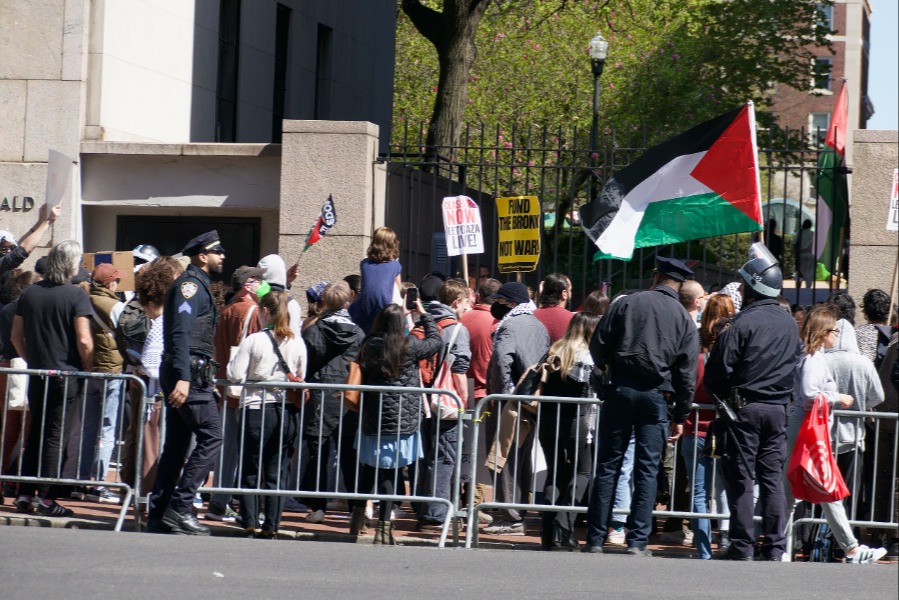Consequence, Weapons of Mass Destruction, and the Fourth Amendment's 'No-Win' Scenario
And, since I'm catching up on my blogging this morning, let me also recommend this paper by Scott Glick from the National Security Division of DOJ. Very much relevant to the ongoing meta-data debate and other post-9/11 domestic law enforcement issues. You may not agree, but it is worth a read. Here's the abstract:
What is the role that consequence should play in a Fourth Amendment analysis?
Published by The Lawfare Institute
in Cooperation With

And, since I'm catching up on my blogging this morning, let me also recommend this paper by Scott Glick from the National Security Division of DOJ. Very much relevant to the ongoing meta-data debate and other post-9/11 domestic law enforcement issues. You may not agree, but it is worth a read. Here's the abstract:
What is the role that consequence should play in a Fourth Amendment analysis? Should our view of reasonableness be affected by the nature of the consequence that the government seeks to prevent, such as stopping a terrorist from using a weapon of mass destruction (WMD)? While some may consider the use of a WMD by a terrorist to be a plot for an action movie, since the September 11, 2001, attacks, there have been increasing indications that malicious actors or organizations are attempting to obtain a WMD in order to cause massive devastation or catastrophic loss of life. Aside from advancements in technology that may enable the government to deploy an effective system of WMD sensors in the future, one of the most effective methods that the government could employ to locate a suspected terrorist who intended to use a WMD in an American city would be to monitor the terrorist’s communications. But what if the government did not know the specific telephone or e-mail account that the suspected terrorist was using, even though it had specific and credible information that he intended to assemble and use the WMD sometime within the next 30 to 45 days? If the nation was not at war, how should a federal court resolve the constitutional tension that would arise if, instead of seeking a wiretap order that targeted a particular telephone or e-mail account, the government sought an order permitting it to target an indeterminate number of communications devices within that city, because that is the only way to find the terrorist and prevent the use of the WMD? Should the court refuse to issue such an order because the Fourth Amendment tolerates no other result, even though it could lead to massive destruction or catastrophic loss of life? The hypothetical presents what some may call the Fourth Amendment’s “no-win” scenario, and it enables us to explore what very well may be some of the most challenging constitutional questions of our time. First, should consequence – that is, the nature and gravity of harm the government seeks to prevent – ever play an outcome-determinative role in a Fourth Amendment analysis? Equally important: who should decide whether consequence has a role to play? And, finally, how can government officials, who are responsible for protecting the nation from terrorists who seek to cause massive destruction or a catastrophic loss of life, obtain greater ex ante certainty in regard to the constitutionality of their preventative actions? This article looks at consequence, with a particular focus on the threatened use of a WMD, to begin a discussion on a new doctrinal solution to the hypothetical. As background, Part I takes a look at cardinal Fourth Amendment principles and rules, as well as the many exceptions to the warrant, probable cause and particularity requirements that the Supreme Court has recognized. Part I also discusses minimization, a well-established privacy enhancing mechanism that normally serves as a back-end check on the government’s conduct, to determine whether it can serve as a front-end substitute for the Fourth Amendment’s particularity requirement. Based on publicly available information, Part II briefly explores the differences between chemical, biological, radiological, and nuclear WMDs, and the different consequences that can be reasonably anticipated from their respective use. Identifying these differences is critical to understanding how the significant definitional issues identified in Part III might affect the implementation of any new doctrinal solution. Part IV then looks at these issues through what I have elsewhere described as the “Fourth Amendment’s protective lens” and proposes that we use a probability-consequence matrix as an analytical framework to solve the “no-win” scenario. Finally, Part V seeks to lay out a path forward so that the Congress can consider and enact sensible legislation that will enable us to identify the limited circumstances in which consequence should be considered a factor in a Fourth Amendment calculus, particularly when a terrorist threatens to use a WMD.
Paul Rosenzweig is the founder of Red Branch Consulting PLLC, a homeland security consulting company and a Senior Advisor to The Chertoff Group. Mr. Rosenzweig formerly served as Deputy Assistant Secretary for Policy in the Department of Homeland Security. He is a Professorial Lecturer in Law at George Washington University, a Senior Fellow in the Tech, Law & Security program at American University, and a Board Member of the Journal of National Security Law and Policy.





